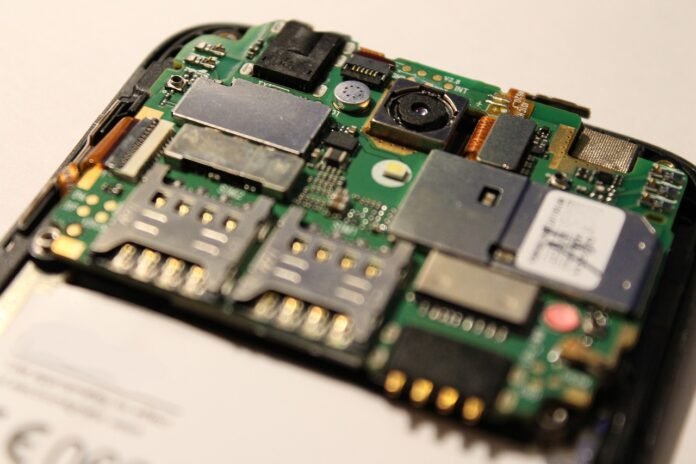In today’s fast-paced digital era, mobile phones have become an indispensable part of our lives. From multitasking and gaming to running resource-intensive applications, the performance of a smartphone largely depends on its hardware specifications. Among these, Random Access Memory (RAM) plays a crucial role in ensuring smooth and efficient operation. However, the question remains: how much RAM should you get? Let’s dive into the topic and explore the factors to consider when determining the ideal RAM configuration for your mobile device.
Understanding Random Access Memory:
Random Access Memory serves as the temporary working memory of a smartphone, allowing it to process and store data that is actively being used. It acts as a bridge between the processor and storage, enabling quick access to frequently used information. The more storage you have, the more apps it can keep in memory simultaneously, enhancing multitasking capabilities and reducing app reloading times.
Factors to Consider:
Operating System and User Interface:
The Random Access Memory requirements of a mobile phone are influenced by the operating system (OS) and user interface (UI) it runs on. Android devices generally benefit from having more RAM due to their versatile multitasking capabilities, while iOS devices are optimized to perform efficiently with comparatively less storage.
User’s Typical Usage:
Your typical smartphone usage patterns play a vital role in determining the amount of memory required. If you use your phone for light tasks like browsing, social media, and messaging apps, a device with 3-4GB of RAM should suffice. However, if you engage in resource-intensive activities such as gaming, video editing, or running multiple demanding applications simultaneously, you may need a device with 6GB or more memory for optimal performance.
Future-Proofing:
Considering the longevity of your smartphone is essential when evaluating RAM requirements. As apps and operating systems continue to evolve and demand more resources, it is advisable to invest in a phone with ample memory to ensure a smooth experience over an extended period. Opting for a device with 6-8GB of Random Access Memory or higher can help future-proof your phone and ensure its longevity.
Budget Constraints:
RAM is one of the key factors that influence the price of a smartphone. While higher memory configurations offer better multitasking and performance, they also come at a higher cost. Therefore, it is crucial to strike a balance between your budget.
When determining the ideal RAM configuration for a phone, several factors come into play. The operating system, user interface, typical usage patterns, and future-proofing are all crucial considerations. While 4GB of RAM is considered sufficient for most light to moderate users, heavy users or those with demanding tasks may benefit from phones with 6GB or more RAM. Ultimately, the decision should be based on your specific needs and budget. Remember, investing in a smartphone with adequate RAM ensures a seamless experience, enhances multitasking capabilities, and prepares your device for the evolving demands of the digital landscape.
Choosing the RAM for Your Smartphone: Matching Your Usage Needs

When it comes to smartphone performance, Random Access Memory (RAM) plays a crucial role. It determines how efficiently your device can handle multiple tasks, run demanding applications, and provide a smooth user experience. However, choosing the right type of RAM for your smartphone can be a daunting task, as different usage patterns require varying levels of performance.
Entry-Level Users:
If you primarily use your smartphone for basic tasks such as calling, texting, browsing the web, and using social media apps, you fall into the entry-level user category. For this level of usage, smartphones with 2GB to 3GB of LPDDR3 RAM should suffice. LPDDR3 (Low Power Double Data Rate 3) RAM is energy-efficient and offers satisfactory performance for everyday tasks without straining your budget.
Moderate Users:
Moderate users engage in a slightly more diverse range of activities on their smartphones. This includes multitasking with several apps simultaneously, streaming media, playing casual games, and using productivity tools. For these users, smartphones equipped with 4GB to 6GB of LPDDR4X RAM would be a suitable choice. LPDDR4X RAM provides improved performance and power efficiency, ensuring a smoother user experience while accommodating moderate multitasking requirements.
Power Users and Gamers:
Power users, gamers, and individuals who heavily rely on their smartphones for resource-intensive tasks require devices with enhanced processing capabilities and ample RAM. For this category, smartphones equipped with 6GB to 8GB (or even higher) of LPDDR5 RAM are recommended. LPDDR5 RAM offers higher bandwidth and faster data transfer rates, enabling seamless multitasking, smooth gaming experiences, and faster app launches.
Content Creators and Heavy Multitaskers:
If you frequently edit photos or videos, work with professional applications, or engage in heavy multitasking that involves running multiple resource-intensive apps simultaneously, it is advisable to opt for smartphones with 8GB to 12GB of LPDDR5 or LPDDR5X RAM. The increased RAM capacity ensures smooth performance, faster rendering times, and minimal app reloading, allowing you to work seamlessly without experiencing lag or slowdowns.
It is important to note that while RAM is a significant factor, it should be considered alongside other specifications such as the processor, storage, and display quality to ensure an overall smooth and efficient smartphone experience. By aligning the best RAM with your specific usage needs, you can make an informed decision and find a smartphone that delivers the right balance of performance, productivity, and value for your mobile lifestyle.


